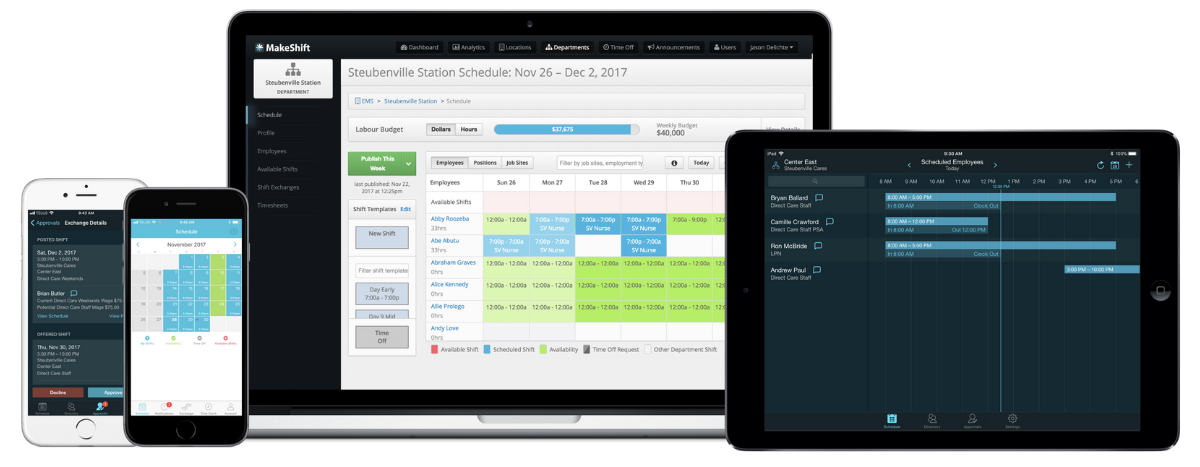As businesses continue to evolve, it's increasingly clear that the success of any company depends mainly on the people who work there.
That's why adopting a people-first approach to HR policies, like employee attendance, is so important.
After all, your employees are your most valuable asset, and creating a positive work culture that supports their needs is crucial for maintaining productivity and promoting job satisfaction.
A well-crafted employee attendance policy plays a starring role in keeping your team on track while feeling valued and supported.
Today, we’ll take a deep dive into why a people-first employee attendance policy is essential and how you can develop one that works for your team.
- What Is An Attendance Policy?
- Benefits of a People-First Attendance Policy
- 4 Core Principles of a People-First Attendance Policy
- 5 Steps To Create a People-First Attendance Policy
- MakeShift Can Support Your People-First Attendance Policy
- Frequently Asked Questions
- A People-First Attendance Policy Is Good For You & Your Team
What Is An Attendance Policy?
An attendance policy is a set of rules and guidelines a company creates to manage its employees' attendance. It specifies employee expectations and requirements regarding attendance, punctuality, and time off.
Attendance policies include things like:
- How to report absences
- How to request time off
- How many sick days or vacation time an employee gets
- The consequences for not meeting attendance requirements
While it's vital for your business to have an attendance policy to ensure work is completed on time and efficiently, it's equally important to create a policy that takes into account the needs and well-being of employees.
A people-first attendance policy recognizes that employees are human beings with personal lives and commitments outside of work.
It provides flexible options for attendance, prioritizes employee well-being, and encourages employees to take time off when needed without penalty or negative consequences.
A well-designed attendance policy can cultivate a positive company culture and improve employee satisfaction and retention.
According to a survey by the Society for Human Resource Management (SHRM), absenteeism and tardiness cost businesses an average of 2.5% of their yearly payroll.
This means that a company with a payroll of $1 million could potentially lose $25,000 due to poor attendance.
Another fun fact — the same survey found that implementing an effective attendance policy can cut absenteeism by almost 66%.
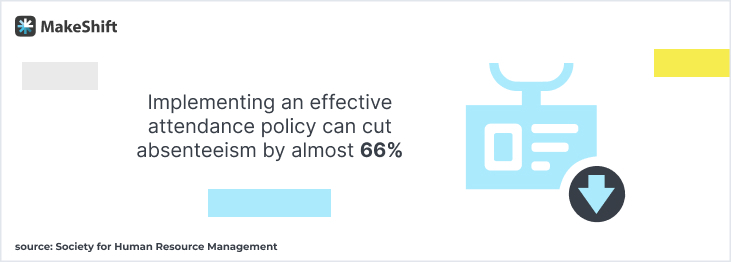
4 Benefits of a People-First Attendance Policy
Remember, a people-first attendance policy prioritizes your employees’ well-being and lives outside of work. And when you put a policy like that in place, your staff and your company will reap the benefits.
Our favorite 4 benefits are listed below:
1. Increased employee engagement & productivity — A people-first attendance policy develops engaged employees because they feel valued. And companies with high employee engagement have 21% higher productivity than those with low employee engagement.
In addition, engaged employees are more likely to show up to work on time and stay productive throughout the day.
2. Improved retention rates — According to a survey by the Society for Human
Resource Management, companies that offer flexible work arrangements have a 14% lower turnover rate and higher employee satisfaction.By creating a people-first attendance policy that prioritizes employee well-being and work-life balance, you’ll increase employee satisfaction and reduce turnover.
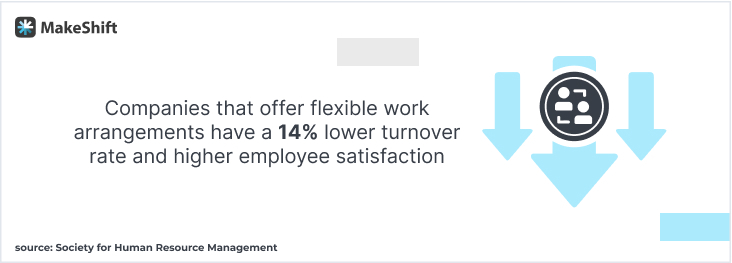
With today’s labor shortage, staff retention should be a top priority.
3. Less absenteeism & presenteeism — According to the CDC, workplace absenteeism costs U.S. employers $225.8 billion annually. By creating a people-first attendance policy that provides employees with flexible options and opportunities for self-care, you’ll reduce absenteeism and presenteeism.
(Presenteeism is when an employee is at work but “out of it.”)
4. Positive impact on employee mental health & well-being — A study by the World Health Organization found that depression and anxiety disorders cost the global economy $1 trillion per year in lost productivity. Creating an attendance policy placing importance on mental health and well-being can reduce the impact of mental health issues on productivity and retention.
After Covid, more employees expect more balance between work and well-being.
4 Core Principles of a People-First Attendance Policy
Now, you can’t just wing together an attendance policy and label it “people-first.”
A solid employee work policy that prioritizes your staff’s well-being and work-life balance has 4 core principles.
1. Emphasize employee well-being and mental health
This principle recognizes that your employees have lives outside of work and will face personal or family issues that affect their attendance.
A people-first attendance policy prioritizes employee well-being and mental health by providing support, resources, and accommodations when needed.
This can include access to counseling services, flexible scheduling, or time off for personal or family reasons.
56% of employees say that their work is a significant source of stress in their lives.
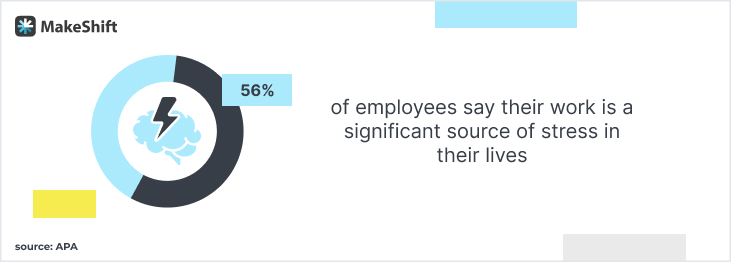
This stress can lead to physical and mental health problems, as well as reduced productivity and increased absenteeism.
2. Encourage prioritizing self-care
Self-care is essential for your employees’ well-being, and a people-first attendance policy recognizes this by encouraging employees to prioritize self-care.
This can include promoting healthy habits like exercise, healthy eating, and adequate sleep. It can also mean allowing employees to take time off for mental health days or medical appointments.
Remember, as a manager, you should lead by example — talk about what you do to prioritize your own self-care.
A National Business Group on Health study found 66% of employers offer wellness programs to their employees These programs can lead to lower healthcare costs, plus more productivity and employee engagement.
4. Offer flexible options for attendance, like remote work or flexible hours
A people-first attendance policy provides flexibility for your employees to manage their work schedules and personal lives.
This can include options for remote work, flexible hours, or job sharing to accommodate employees' needs.
For example, an employee with a long commute may benefit from working from home a few days a week, while a parent with young children may prefer flexible hours to accommodate daycare schedules.
Implementing scheduling software can enhance flexible scheduling by making it easy to access schedules on their phones and swap shifts on the go.
After the pandemic, 69% of employers offer some form of remote work, and 58% offer flexible work arrangements to their employees.
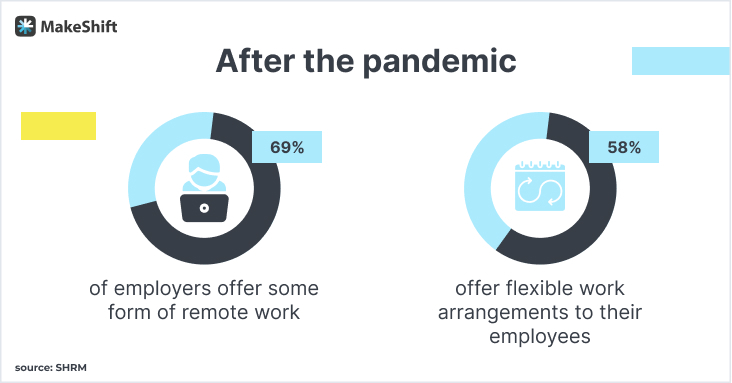
4. Build opportunities for employees to take time off without penalty or negative consequences
Finally, a people-first attendance policy recognizes that employees will need time off for personal or family reasons.
This can include time off for vacation, illness, bereavement, or caregiving responsibilities. Your policy should ensure employees can take this time off without penalty or negative consequences and that their job security is protected while they're away.
According to the Center for American Progress, workers who have access to paid time off are more productive and more likely to stay with their employer.
5 Steps To Create a People-First Attendance Policy
Now that you’ve got an understanding of the core principles of a people-first attendance policy, it’s time to start creating yours.
1. Research the needs and preferences of your employees
To create a people-first attendance policy, you first have to understand the needs and preferences of your team. This can be done through surveys, focus groups, or one-on-one conversations with employees.
Try one (or all) of these ideas to gather employee feedback:
- Conduct a survey asking what types of work schedule employees would prefer, like remote work or a flex schedule.
- Hold focus groups to gather feedback on your current attendance policy and identify areas for improvement.
- Meet with individual team members to understand their unique needs and challenges when it comes to attendance, such as family responsibilities or health concerns.
2. Collaborate with employees and managers to create a policy that meets their needs
Once you've gathered information on the needs and preferences of your employees, it's time to collaborate with them and managers to create a policy that meets their needs.
We’ve brainstormed some collab ideas for you:
- Form a committee of employees and managers to review the research and develop a policy that reflects the needs and preferences of your workforce.
- Create a task force to pilot the new attendance policy and gather feedback from employees and managers on how well it's working.
- Hold “town hall” meetings to hear from employees on the draft policy and make necessary adjustments based on their input.
3. Communicate the policy clearly and consistently to all employees
Communicate the new attendance policy clearly to all employees. This can help ensure everyone understands the policy and knows what's expected of them.
Here are some examples:
- Create a handbook or document that outlines the new attendance policy and provides examples of how it will be implemented.
- Hold training sessions for employees and managers to explain the new policy and answer questions.
- Post the new policy in a visible location, like a bulletin board or the company social platform.
4. Train managers on how to implement the policy in a supportive and equitable manner
Managers play a crucial role in implementing a new attendance policy. Provide them with the training and resources they need to implement the policy in a supportive and equitable manner.
Try one of these options:
- Hold training sessions for managers to lay out the new policy and give guidance on how to implement it.
- Provide resources, like templates for communication with employees, to help implement the policy consistently.
- Encourage your managers to be flexible and supportive when employees request time off or accommodations.
5. Evaluate your attendance policy regularly and make adjustments based on staff feedback
Finally, evaluate your new attendance policy regularly and tweak it based on team feedback. This can help ensure that the policy continues to meet the needs of your workforce.
A few ways to do this are:
- Conduct surveys or focus groups to get employee feedback on how well the policy is working.
- Analyze attendance data to identify any trends or areas where the policy may not be working as intended.
- Review the policy regularly, maybe once a year, to ensure it’s still relevant and effective.
MakeShift Can Support Your People-First Attendance Policy
MakeShift was developed from a people-first approach, so we naturally fall right in line with this type of attendance policy.
MakeShift scheduling supports a people-first employee attendance policy in 3 ways:
1. Increased scheduling flexibility
MakeShift Scheduling allows employees to easily request time off or trade shifts with their coworkers through the app, reducing scheduling conflicts and bumping job satisfaction.
For example, an employee can request time off directly through the app, and their manager can review the request and either approve or deny it. This feature empowers employees to take control of their schedules and prioritize their personal needs.
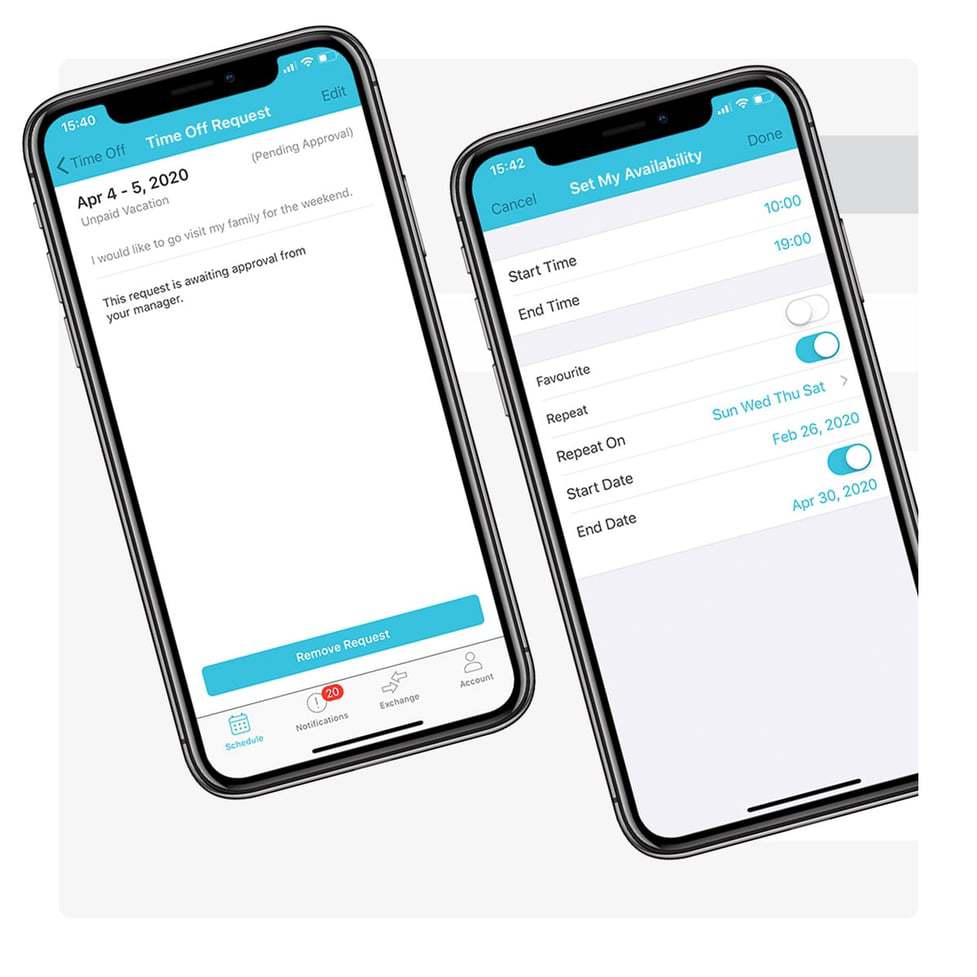
2. Improved communication and collaboration
MakeShift scheduling promotes communication and collaboration between employees and managers through its in-app messaging feature.
It allows employees to set their availability, communicate scheduling needs, and any other relevant info to their managers.
For example, an employee can communicate their preferred shift times, availability for overtime, or any scheduling conflicts they may have right from their phone.
This feature helps ensure that employees are informed and engaged in the scheduling process.
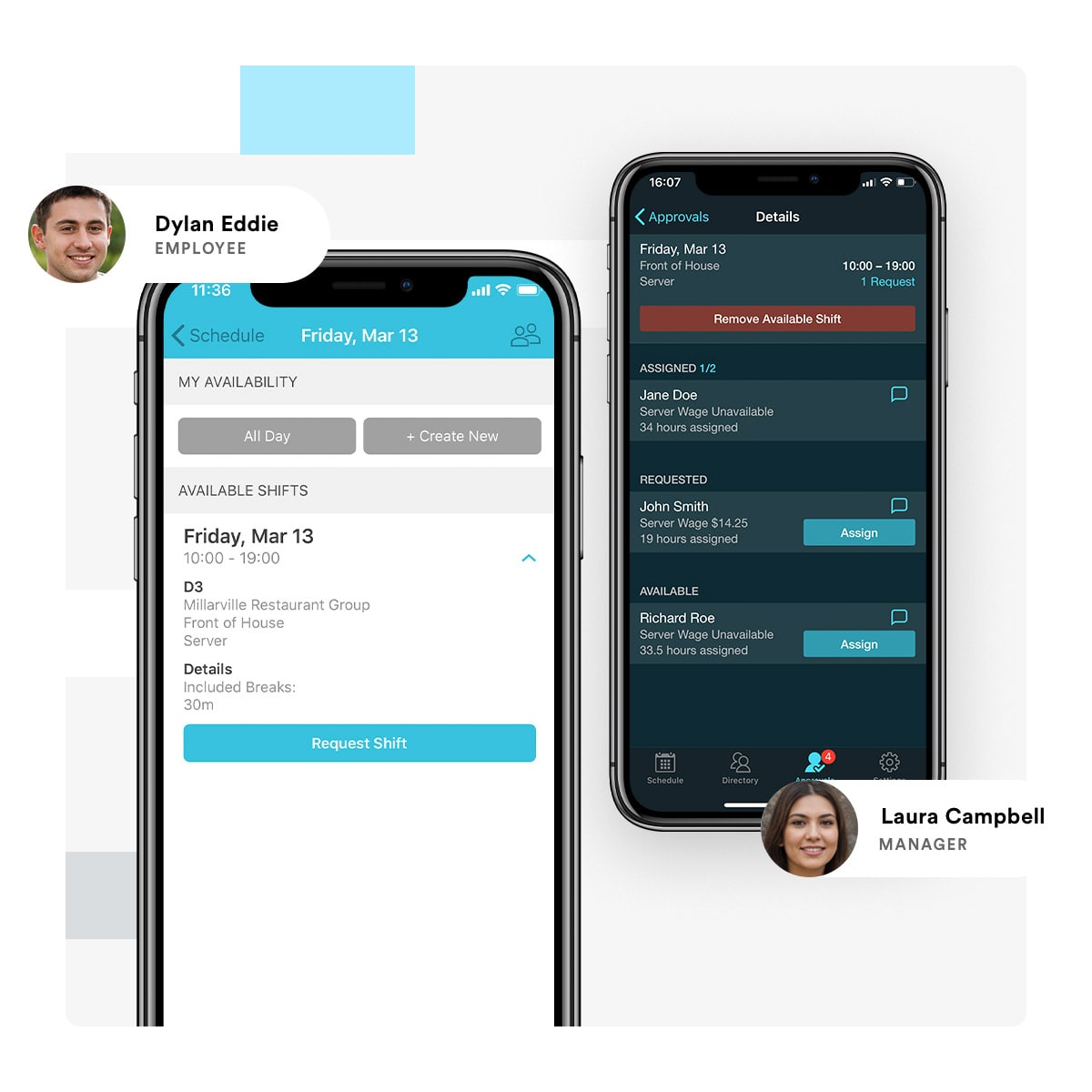
3. Enhanced employee engagement and well-being
By providing employees with more control over their schedules and reducing scheduling conflicts, MakeShift can help to improve employee engagement and well-being.
For example, when employees feel that their schedules are flexible and accommodative of their needs, they’re more likely to be happy with their jobs and less likely to experience stress or burnout.
.jpg?width=1200&height=1200&name=schedule_pocket_(1).jpg)
Frequently Asked Questions
Still have a few questions about attendance policies for employees? You’re not alone - we’ve compiled FAQs for you here.
What is a reasonable attendance policy?
A reasonable employee attendance policy should clearly outline expectations for attendance and provide allowances for unexpected absences. It should also establish a fair and consistent system for addressing attendance issues and offer resources to support employees in meeting attendance requirements.
What is an acceptable number of work absences per year?
There’s no universally acceptable number of work absences per year — it can vary depending on the industry, job responsibilities, and company culture.
What is included in an employee attendance policy?
An employee attendance policy typically includes info on the expected work schedule, how absences are reported and approved, consequences for excessive absenteeism, and accommodations for FMLA or disability-related absences.
What is the purpose of an attendance policy?
The purpose of an employee attendance policy is to establish clear expectations for attendance, provide guidance on how to report and manage absences and outline consequences for excessive absenteeism. The ultimate goal is to improve productivity and maintain a positive work environment.
How do you write an attendance policy?
To write an employee attendance policy, first, identify goals and expectations for attendance, outline reporting procedures, define the consequences for absenteeism, and address any accommodations for FMLA or disability-related absences. The policy should be communicated clearly to all employees and reviewed periodically for updates and revisions.
A People-First Attendance Policy Is Good For You & Your Team
An attendance policy that puts your team’s well-being first will pay off big time.
You’ll have happier, more engaged employees. And you’ll see productivity go through the roof.
We’d love to support your attendance policy with smarter scheduling — it’s kind of our thing. Book a free demo today.




